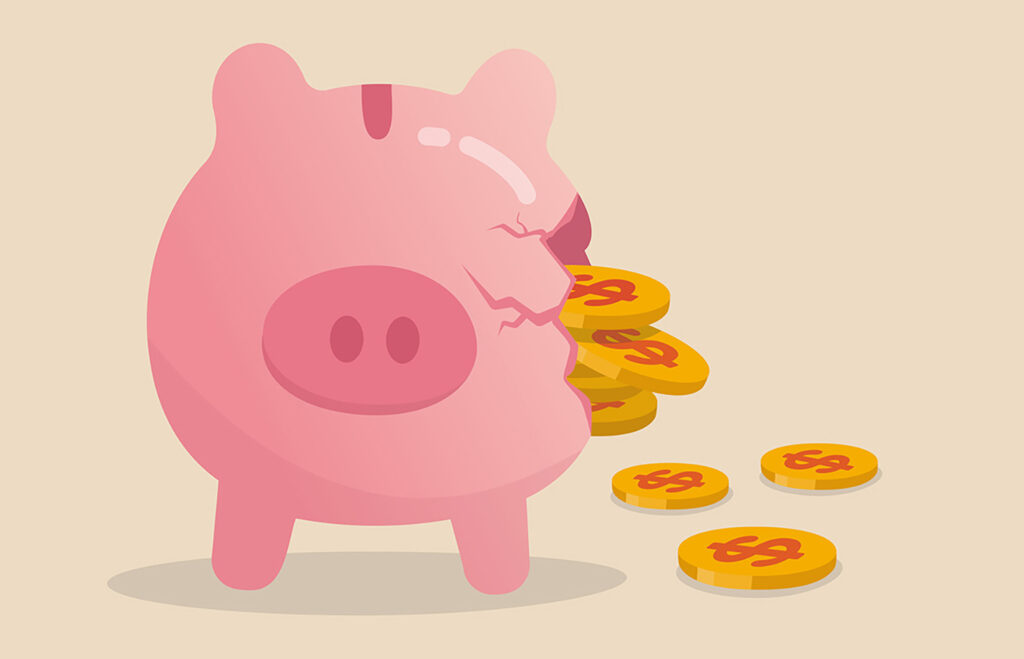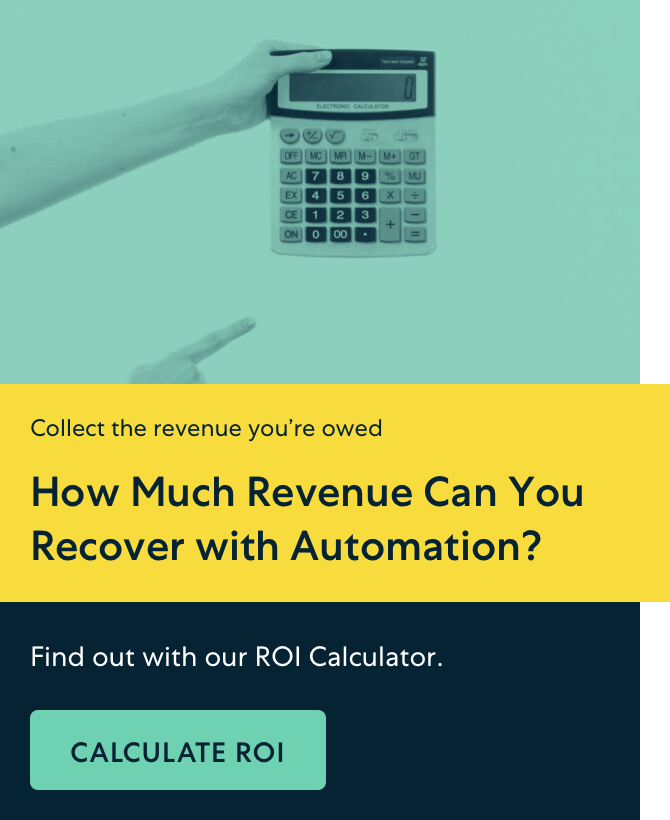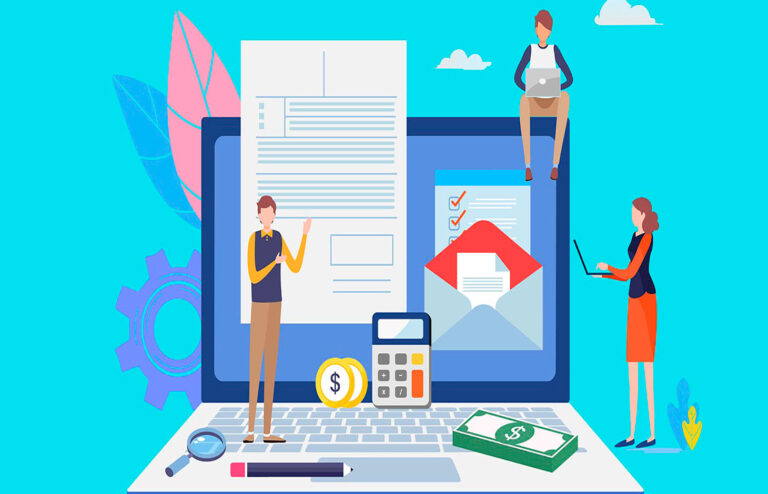Revenue leakage is sneaky.
It happens in the small corners of your business operations and in ways that seem forgivable—so long as you don’t look too hard.
But once you take an honest look at how much money your SaaS business is really missing out on, it’s impossible to unsee. This is especially true for revenue that’s slipping away because of an inefficient, manual-heavy billing process.
Your billing engine is how your business collects its hard-earned cash. So, when your billing process is the thing causing you to lose money, it’s ironically counterproductive. And of course, it stunts growth.
Yet, this happens in SaaS businesses all the time. An invoicing error here, an unresolved failed payment there. Businesses lose up to 5% or more of their earnings on mismanaged delinquent payments alone.
It’s important to investigate the common areas of recurring revenue leakage for your business and find solutions that keep your cash flowing smoothly.
1. Manually Prorating (or Not Prorating) Subscriptions at Sign-up
How does your SaaS business handle subscription sign-ups mid-billing period? If you’re billing your customers without the help of automated software, you probably:
- manually calculate proration for each new account,
or—far more likely, - skip proration entirely and just begin billing them at the start of the next period.
One of these options is grueling at scale, demanding resources and time while creating plenty of opportunities for human error and revenue leakage.
The other is even worse—forfeiting revenue right from the moment of activation on almost every new account. You’re giving your product away for free. And this issue is further compounded by whatever costs your business incurs to provide the product.
For SaaS and subscription businesses, failure to prorate can leak 1-3% of total revenue a year. That’s a revenue leakage nightmare.
The good news is, it’s one you can wake up from!
Adaptive recurring billing software automatically and accurately calculates proration for you so new customers are billed from the moment they subscribe for exactly the amount of time left in a billing period.
What about when a customer upgrades to a higher plan? Because modern billing systems automate revenue recognition, they update your billing to reflect any plan changes as well, and in real time. This means your customer gets to enjoy the service they want when they want it, and you get paid appropriately.
2. Inaccurate Recurring Billing and Invoicing
Let’s face it: if you’re putting invoices together by hand each month—or even with some manual tweaks and revisions—you’re already familiar with how inefficient and error-prone the process is.
Billing and invoicing inaccuracies are a threat to both your business’s recurring revenue and its customer relationships.
- Underbilling means your SaaS business misses out on income.
- Overbilling erodes customer trust and can even lead to churn if not handled well.
For SaaS businesses with multiple subscription pricing plans, add-ons, promotions, usage fees, and other complex billing scenarios, there’s an even higher potential for errors.
In these scenarios, automated billing software becomes crucial at scale.
Modern SaaS billing platforms auto-generate invoices by pulling real-time data directly from your customers’ accounts. This ensures reliable, accurate billing every time and prevents errors and revenue leaks without all that manual effort.
3. Updating Pricing Manually
How badly can pricing-related billing errors damage your recurring revenue? At Stax Bill, we’ve seen customers automate their billing and, in the process, realize they’d been undercharging some of their customers—for years.
Try having that conversation.
This is frequently the unfortunate outcome for SaaS businesses that perform price updates manually. Mistakes happen, and when your pricing changes, making updates by hand leaves room for errors. This is especially true at scale when manual uplifts become a drain on resources.
Of course, the solution isn’t to just never update your pricing. Regular pricing iteration:
- increases your customer lifetime value (LTV)
- improves your business’s bottom line, and
- enables your SaaS business to be agile with its pricing strategy to stay competitive.
Robust subscription billing software makes it easy to perform bulk pricing updates for all customers under plans to ensure no one gets missed.
Have individual customers with special contracts? You can also edit at the customer level when you need to. Have SaaS contracts with built-in price uplift schedules? The right billing software can automate that as well
Introducing automated uplifts to your SaaS billing process catches missed updates for existing customer accounts and applies them to new ones. This recovers revenue while also preventing future revenue leaks.
4. Bogged-down Dunning Management
Missed and failed payments don’t just put pressure on your cash flow. Letting collections slip through the cracks means your recurring revenue takes a hit.
Failed payments frequently lead to involuntary churn. This is completely preventable churn that happens when a customer’s credit card expires or their payment fails and nothing is done to get them back in good standing. Customers may not even know their payment has failed initially, but they ultimately churn out due to inaction. You lose out on that failed payment as well as any future payments they would have made.
SaaS businesses lose about 9% of their monthly recurring revenue due to failed payments and involuntary churn, according to Baremetrics data. That’s a hefty cash leak!
To recover this revenue, you need a strong dunning management process that:
- retries failed payments on a schedule
- motivates customers to make payments on time, and
- gathers updated payment details when cards expire.
Does that sound like a lot of work? It is.
That’s why SaaS billing software automates the dunning process. We’ve found an extended retry schedule alone can produce a failed payment recovery rate of up to 6%.
With automated retries, customer notifications, and card updating, a robust SaaS billing platform quietly recovers leaking revenue and leaves your team free to focus their talent on other important areas.
5. Aging Accounts Receivables and Collections
The older unpaid accounts receivables get, the less likely they are to be paid. This is challenging to manage manually.
Your SaaS billing system should make it easy for you to track your aging receivables and take action to make sure you get paid.
“Revenue is the lifeblood of the business,” said On The Map CEO Rick Hoskins.
As his marketing business scaled, it was a lesson he almost learned the hard way.
Using spreadsheets to track accounts receivables and collections worked in the early growth stages of the business. However, once On The Map began to scale, its billing team ran into trouble. They were overlooking missed payments and leaving failed payments unchecked for months at a time—critically damaging revenue.
Through transforming its SaaS billing system, the business leveraged detailed reporting, streamlined billing and payment, and automated dunning management to recover an average of $600,000 in annual revenue.
Recover Recurring Revenue Leakage with Automated SaaS Billing Software
While it’s likely impossible to completely plug revenue leaks, the benefits of adaptive billing software to a SaaS business’s bottom line are clear.
Automating your billing process reduces manual errors, speeds up and helps ensure collections, and recovers revenue lost to failed payments. Together, these efficiencies unlock healthy cash flow and business growth.
Funnel your efforts into providing the best SaaS product for your customers and let a platform like Stax Bill handle billing and revenue recovery. With automation and detailed revenue reporting functionalities, Stax Bill plugs revenue leaks and shows you exactly where your profit is made and saved.
FAQs about Revenue Leakage
Q: What is revenue leakage in a SaaS business?
Revenue leakage refers to the loss of revenue in a SaaS business that may go unnoticed. This typically occurs due to incorrect or underbilling. Mismanagement of failed payments and involuntary customer churn can also contribute significantly to revenue leakage.
Q: What is the impact of inefficient billing on revenue leakage?
An inefficient, manual-heavy billing process poses a great risk for revenue leakage. Errors such as miscalculations and overlooks can lead to substantial losses in a SaaS business’s earnings. Furthermore, if left unnoticed, these errors may cause lags in growth.
Q: How does subscription billing contribute to revenue leakage?
Without automatic subscription billing, businesses may miscalculate prorations for new accounts or underestimate the amount due from direct activations. This oversight can cause businesses to leak between 1-3% of total revenue each year.
Q: How do pricing-related billing errors affect recurring revenue?
Billing errors due to price updates can severely damage recurring revenue. SaaS businesses can end up undercharging their customers, limiting their revenue potential. Regularly updating pricing with automated billing software prevents this type of revenue leakage.
Q: How can failed payments lead to revenue leakage?
Missed and failed payments put a strain on SaaS businesses’ cash flow and recurring revenue. According to Baremetrics data, SaaS businesses can lose about 9% of their monthly recurring revenue due to failed payments and involuntary churn. An effective dunning management process can help recover this lost revenue.
Q: How can automated billing software help prevent revenue leakage?
Automated billing software can help SaaS businesses prevent revenue leakage in several ways. It ensures accurate proration calculations for new customers, handles plan upgrades in real time, minimizes invoice inaccuracies, and handles bulk pricing updates. Additionally, it can automate the dunning process to recover failed payments, thereby providing a comprehensive solution to revenue leakage.
Q: What is the role of SaaS billing software in managing accounts receivables?
Tracking and managing aging accounts receivables can be challenging manually. SaaS billing software makes this easier by providing real-time data from customers’ accounts. This helps prevent errors revenue leaks, and ensures on-time payment collections.
Q: What is the potential impact of resolving revenue leakage on SaaS business growth?
By automating the billing process, SaaS businesses can plug revenue leaks and ensure smoother operations. This not only recovers substantial amounts of lost revenue but also promotes healthy cash flow and business growth.








